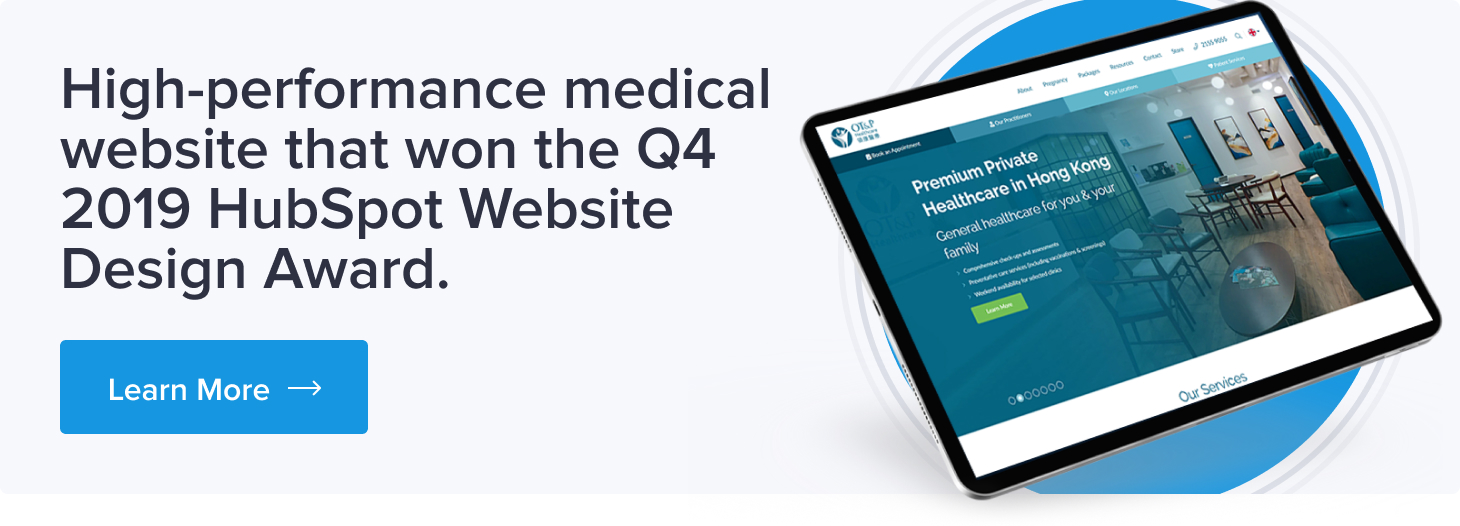With a little over 3.1 billion active internet users in Asia, any business looking to win over the Asian market would require a solid digital marketing strategy and consistent implementation. With the advancement of different online platforms offering vast information on various healthcare topics and innovative in-person patient experiences, healthcare professionals and institutions must find the best digital marketing techniques to match their ideal clients.
This article discusses 12 proven medical marketing tactics in Asia that will set you up for success for the year ahead.
1. Use Data Analytics for Strategies and Forecasting
Leveraging data analytics for your medical business allows you to make more informed decisions in your strategy. There are many ways to analyse data; the trick is to match it to your goals. An example would be tracking booking behaviour to amplify customer experience in the preferred method.
Matching data to your marketing goals can sometimes be a complex process, and an excellent tool for getting started on analysing your data is HubSpot's Marketing Analytics & Dashboard Software. You can measure the performance of all your marketing campaigns in one place with built-in analytics, reports, and dashboards, and it's easy to use.
For an in-depth look at how HubSpot’s powerful CRM and marketing automation tools can specifically empower your medical practice to engage more patients, watch this video by Laurent Ross, COO of Oxygen:
2. Blogging
Blogs are a critical part of any digital marketing strategy and have benefits that have ripple effects on your long-term strategy. Blogs aid your SEO (search engine optimisation), drive traffic to your website, display an in-depth knowledge of your practice services, add personality to your brand, and answer any frequently asked healthcare questions. With all of these components, Google not only recognises that you are a relevant source for content but a reliable one too when patients search for you or your services.
3. Set Up and Optimise Your Google My Business Listing
Google My Business is a free business listing from Google that provides contact details of your practice, as well as your location, services and products. This information pops up when clients search for you or your services, motivating them to pick your practice based on the information provided. Creating a Google My Business for your medical practice will increase your visibility across all Google services (Google Maps, Google Shopping), strengthening your online presence and chances of getting discovered. The platform requires you to assign relevant categories and attributes of your practice to match you with your ideal clients. It also allows you to link web pages from your website like your' services' or 'contact us' page, improving website traffic and brand value.
4. Create a Platform for Reviews and Promote It
Every medical practice should recognise the need for a patient review strategy to build brand credibility and trust. A reviews platform boosts the practice's reputation, creating an opportunity to reach a bigger audience and increasing SEO and puts you as a better choice next to your competitors. No business can control what is said about them online, so it's essential also to monitor your reviews to promote positive ones and manage complaints.
5. Create a Referral Program
Referrals are one of the strongest marketing strategies for any business. Creating a referral program will encourage existing clients to refer your practice by incentivising the referral, in turn growing your clientele. How you incentivise is up to you, although Google has some rules on how you should go about it - it has to be a valid referral and the incentive shouldn't be considered a bribe. Generic incentives you can offer would be a gift for every referral or donation to charity.
6. Consistent Healthcare Branding
Consistency in brand identity throughout your marketing platforms helps you stand out next to your competitors; it also creates an imprint of your practice to your existing and potential clients. With all the different digital platforms you'll be using to market the practice (social media, Google), you need to make sure your branding looks the same everywhere. This type of consistency builds trust.
7. Create a user-friendly website
Building a user-friendly website will have your existing and potential clients think of your practice as an easy and delightful experience instead of painful online paperwork and difficulty in finding specific information. Here are some web design and development tips that will make your medical website user friendly:
- Make it mobile friendly - creates compatibility on all devices and not just desktop
- Adding a search functionality or chatbot
- Improve page speed
8. Optimise Your Services for Search Engines
Optimising your services for search engines will require you to do keyword research to find out what people are searching for rather than what you think they are searching for. The research also tells you which keywords are difficult to rank for, which keywords your competitors rank for, and other key information to help in the optimisation. You can create keyword campaigns that will rank your business on Google when users search for your services with this data. There are numerous free tools like Google Keyword Planner and Keyword Tool to get you started and paid platforms like Ahrefs & Semrush.
9. Use Google Ads to Promote Campaigns and Specials
Google ads are another noteworthy way for businesses to target people specifically looking for their services. Not only is this great for mass reach on your target audience, but it also allows you to promote services you specialise in and seasonal medical practices like flu vaccines.
10. Use Social Media
With medical marketing becoming more broad and sophisticated, social media is one of the many tools for knowledge sharing, marketing, and other forms of communication. Social media allows patients to engage with you outside of the doctor's office and provides easy access to your practice holistically in a more casual fashion. Choosing the best networks to be on is crucial as you want to reach your target audience; choose what information you want to share and the types of messages you want to get across.
11. Use SMS Marketing
Texting current and potential patients is a great way to communicate important, up-to-date information. Reminding them about a yearly check-up or wishing them a happy birthday makes clients feel they have individual attention.
Texting will also keep your CRM up-to-date by collecting data on communication with your existing and potential clients. A great tool for this is the Hubspot SMS marketing feature. You can integrate WhatsApp to send messages from your HubSpot account and allow multiple HubSpot users to send messages using the same number. This helps businesses create engaging experiences that will help their long-term marketing strategy.
12. Check-in on Current Patients
Maintaining a relationship with your current patients gives more room for referrals. Again, patients feel valued when they receive individual attention and will speak praises of your practice if healthcare comes up in a conversation. This also helps in client retention by maintaining existing patient relationships, ensuring return visits.
Choose the Strategy That Fits Your Objectives
Different practices have success with different strategies; it's all about choosing a plan that fits what your practice is trying to achieve. As we're going into the new year, think about your goals and create effective marketing strategies that will have you as the number one option for healthcare.
Get in touch with one of our marketing experts to get you started on your marketing for 2022.
 UAE/GCC
UAE/GCC International
International











